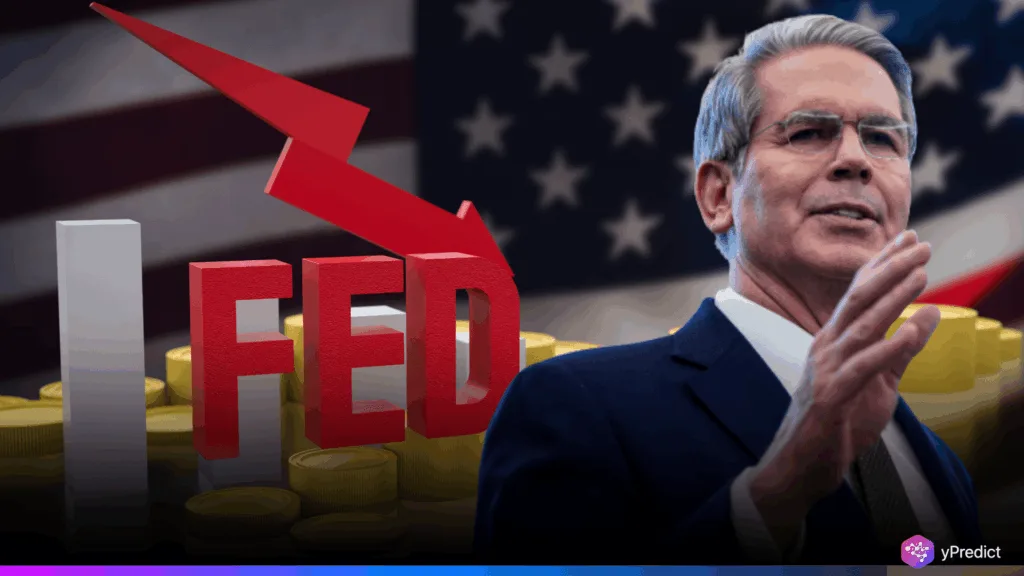
Fresh economic data showed slower job growth and muted inflation, which fueled the September rate cut narrative. Treasury Secretary Scott Bessent stated that the Federal Reserve could have acted sooner if it had received precise data earlier. Additionally, as traders stepped up their bets on deeper monetary easing, U.S. stocks rose more than 1%. These futures indicate that the likelihood of a 50 basis point move is increasing. As a result, markets are now focused on the possibility of a stronger approach to interest rates.
Will Bessent’s September Rate Cut Call Sway the Fed?
Bessent stated that if fresh labor data were available, the Fed’s July decision to maintain interest rates could’ve been different. The data showed slower employment growth in May and June, just a few days after the meeting. He emphasized that these numbers confirmed the necessity of swift action. Additionally, he called for preparation for a larger cut in September to maintain economic growth.
Bessent Links Inflation Trends to September Rate Cut
July saw a 0.2% increase in the consumer price index and an expected 0.3% increase in core inflation. Tariff increases did not affect the price of goods, but they did cause an unexpected increase in service prices. Additionally, investors saw this muted inflation profile as a timely policy change that strengthened sentiment for a September rate cut.
Bessent emphasized his support for a proactive interest rate policy while expressing confidence in Stephen Miran’s appointment to the Fed board. Additionally, he cited ongoing central bank structural reform discussions, including governance and oversight of spending.
The U.S. is engaged in trade negotiations with key allies to reach agreements before the year ends. This trade negotiation also includes Switzerland and India. Bessent said these agreements could boost monetary policy easing and boost the economy, despite some setbacks.
Growing Anticipation Ahead of Fed’s Decision
Markets are closely watching the September meeting as weak jobs data and modest inflation boost easing expectations. A 50 basis point rate cut in September would demonstrate the Federal Reserve’s commitment to stimulating growth. This policy shift could have a significant impact on global currency flows.
It could also alter forex trading dynamics and patterns. Moreover, the move may increase forex market volatility. Traders will closely monitor Fed signals as well as trade events to determine direction.







